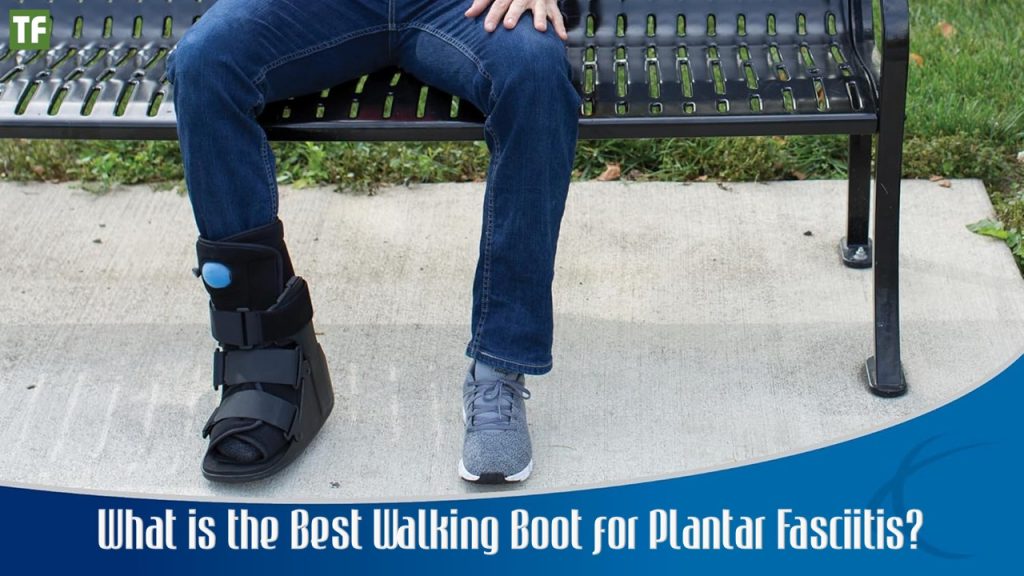Plantar fasciitis is one of the most common causes of heel pain, affecting athletes, workers who stand for long hours, and even people with sedentary lifestyles. When left untreated, the pain can interfere with daily activities and significantly reduce quality of life. One of the most effective treatment methods involves wearing a walking boot designed specifically to relieve stress on the plantar fascia. In this detailed guide, we explore the best walking boots for plantar fasciitis, their features, and how to choose the right one for your condition.
Understanding Plantar Fasciitis
Plantar fasciitis occurs when the plantar fascia, the thick band of tissue running along the bottom of the foot, becomes inflamed. This condition often leads to stabbing heel pain, especially with the first steps in the morning or after periods of rest. Common causes include:
- Overuse or repetitive strain from running or walking
- Poor footwear with inadequate arch support
- Flat feet or very high arches
- Obesity or sudden weight gain
- Prolonged standing on hard surfaces
A walking boot helps by immobilizing the foot, reducing tension on the plantar fascia, and providing the support necessary for healing.

Why Choose A Walking Boot For Plantar Fasciitis?
Unlike standard shoes or braces, a walking boot (also called an orthopedic boot or CAM boot) is specifically engineered to:
- Stabilize the foot and ankle to reduce strain on the plantar fascia
- Distribute pressure evenly across the foot to minimize heel stress
- Reduce inflammation by limiting movement
- Promote natural healing while allowing mobility
Walking boots are especially useful for severe cases where rest, stretching, and supportive footwear alone are not enough.
Key Features To Look For In A Walking Boot
When searching for the best walking boot for plantar fasciitis, consider the following features:
- Rigid Support – Ensures proper immobilization of the foot.
- Cushioned Insole – Provides shock absorption to reduce heel pain.
- Rocker Bottom Sole – Helps maintain a natural walking motion.
- Adjustable Straps – Allows for a secure and customizable fit.
- Lightweight Design – Prevents additional strain during mobility.
- Breathable Materials – Keeps the foot comfortable during extended wear.
Best Walking Boots For Plantar Fasciitis
-
Aircast AirSelect Walker Boot
The Aircast AirSelect is one of the most recommended walking boots for plantar fasciitis. It features inflatable air cells that provide customizable support and compression. The rocker sole promotes a natural gait, while its lightweight design makes it comfortable for extended use.
Pros:
- Adjustable air cushioning
- Excellent stability and protection
- Comfortable for long-term wear
Cons:
- Slightly bulky for some users
You May Also Like:
-
United Ortho Short Air Cam Walker Boot
This boot is ideal for those with mild to moderate plantar fasciitis. It offers excellent ankle and foot stabilization while remaining lightweight. The cushioned insole reduces impact, making it suitable for daily activities.
Pros:
- Affordable option
- Provides good heel relief
- Lightweight yet supportive
Cons:
- Less durable than premium models
You May Also Like:
-
Fracture Walker Boot
Though designed for fractures, this boot also works exceptionally well for plantar fasciitis. It features heavy-duty support and a cushioned interior to ensure maximum comfort. Its universal design fits both left and right feet.
Pros:
- Strong support structure
- Universal fit
- Good for severe cases
Cons:
- Bulkier than plantar fasciitis-specific boots
You May Also Like:
Tips For Using A Walking Boot Effectively
- Consult a doctor or podiatrist before choosing a boot.
- Wear cushioned socks to prevent skin irritation.
- Follow recommended usage time to avoid muscle stiffness.
- Gradually transition back to supportive shoes once healing improves.
- Perform stretching exercises alongside boot use for faster recovery.
Alternative Support Options
While walking boots are effective, some may benefit from additional supportive gear:
- Night Splints – Keep the foot stretched overnight.
- Orthotic Insoles – Provide extra arch support inside regular shoes.
- Compression Socks – Improve circulation and reduce inflammation.
When To Seek Medical Help
If heel pain persists despite using a walking boot, it may indicate:
- A torn plantar fascia
- Stress fractures
- Severe tendon damage
In such cases, medical imaging and advanced treatment options like physical therapy, steroid injections, or even surgery may be required.
Conclusion
Finding the best walking boot for plantar fasciitis can make a dramatic difference in recovery. Options like the Aircast AirSelect, Ossur Rebound, and United Ortho Short Walker stand out for their superior support and comfort. Ultimately, the right choice depends on the severity of your condition, budget, and daily activity level. By choosing wisely and combining boot use with stretching and supportive insoles, you can significantly reduce pain and get back to enjoying an active lifestyle.
FAQs
Q: Can I walk normally in a walking boot?
Not exactly—it’s meant to limit motion, but you’ll still be able to move around safely.
Q: Do I need crutches with a walking boot?
Sometimes. If weight-bearing is too painful, crutches help take pressure off.
Q: Is it safe to drive with a walking boot?
Not recommended, especially on the right foot. Check local laws and your doctor’s advice.
Q: Can a walking boot worsen plantar fasciitis?
Only if it’s the wrong size or worn incorrectly. Proper fit is crucial.
Q: How do I know if I need a tall or short boot?
Mild to moderate cases usually do fine with a short boot, while severe pain calls for a tall boot.



Leave a Reply